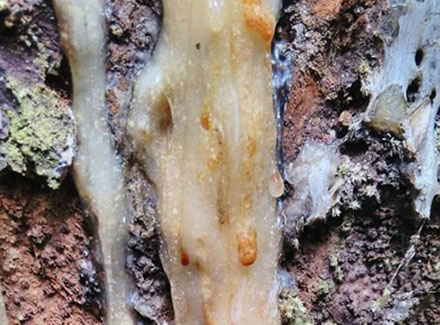New Zealand’s Department of Conservation has underspent its budget for kauri dieback mitigation by $5.7 million over the past seven years. Source: Stuff NZ
But the department says it will continue with kauri protection work, with projects this year including more track upgrades, disease surveillance and developing a national pig strategy.
Kauri are one of the largest and longest-lived tree species in the world, but they are threatened by a fungus-like pathogen, Phytophthora agathidicida or PA, which causes fatal kauri dieback.
The pathogen is invisible to the naked eye and can be spread in less than a pinhead of soil.
The Department of Conservation has prioritised kauri protection since PA was first identified as a problem in 2008 and it has received dedicated funding for this work since 2015, plant pathogens team manager Carol Rolando said.
The majority of funding had gone to help stop the spread of PA on conservation land, such as building boardwalks, new track surfacing and installing hygiene stations.
Some tracks and parks have had to close because mitigation work is too difficult and expensive, she said.
From July 2014 to June 2021, the department had a budget of NZ$28.9m for kauri dieback mitigation, but it only spent NZ$23.2m, according to information received under the Official Information Act.
Ben Reddiex, DOC’s director operations issues and programs, said the NZ$5.7m underspend was mainly due to the challenge of finding contractors prepared to do track upgrade work to the required standard, particularly in 2016 to 2018.
Track upgrades and maintenance also could not be done in wet and muddy conditions due to the water-borne nature of PA, he said.
“The remote locations of track work, additional hygiene and building requirements for working with kauri dieback and unfavourable weather delayed or prevented work from proceeding.”
The money spent included NZ$9.9m on capital works like building boardwalks, upgrading tracks with materials to protect kauri roots, installing hygiene stations, fencing and signs.
A further NZ$5.5m was spent on cleaning, repairing and refilling the hygiene stations and maintaining track surfaces.
Other operational costs included NZ$1.2m on kauri ambassadors, who educate the public about kauri protection in local communities and at track entrances.
A further NZ$1.8m was spent specifically on Northland’s Waipoua Forest, which includes the iconic Tāne Mahuta, for ambassador programs there, pig control, monitoring and disease surveillance.
Mr Reddiex said some kauri protection work could not be specifically costed, such as ranger time, track inspectors, technical specialists or manager time.
The department was developing a business case for further track upgrades and work under way this year included developing a national pig strategy, developing guidelines for road construction in kauri lands, a research scholarship and other kauri protection, he said.
Snow Tane, general manager of Te Roroa iwi which is kaitiaki for Waipoua Forest, said Te Roroa was grateful for the resources DOC had put into Waipoua’s kauri dieback program.
“Should they be investing more? Yep, and there is a project [application] currently under way, but it’s only for a specific amount,” he said.
Mr Snow believed Waipoua had received extra attention because it was Aotearoa’s largest kauri forest and contained some of the country’s largest trees, like Tāne Mahuta and Te Matua Ngahere.
Te Roroa had also developed its program, so it could provide clarity on what money is spent on, he said.
A National Pest Management Plan for PA is set to be launched in August, managed by Biosecurity New Zealand’s newly formed Tiakina Kauri (Kauri Protection) agency.






